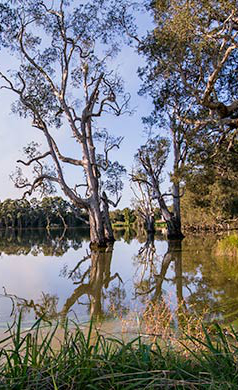Report reviews forest roles
 A new report finds forests act as a buffer against water crises.
A new report finds forests act as a buffer against water crises.
The International Union of Forest Research Institutions (IUFRO) has released its Forest and Water on a Changing Planet: Vulnerability, Adaptation and Governance Opportunities. A Global Assessment Report.
“This international effort to highlight the interlinkages between forests, water, people and climate is very timely, given the pressures we now face on both human society and natural ecosystems,” says researcher Professor Caroline Sullivan is a member of United Nations-supported Global Forest Expert Panel on Forests and Water.
“For example, here in Australia, we are facing water shortages, massive loss of biodiversity, rising incidence of floods and droughts, and loss of economic capital and human wellbeing.”
More than 50 scientists from 20 countries contributed to the assessment.
The interdisciplinary panel is made up of experts in forestry, hydrology, meteorology, soil sciences, ecology, physics, chemistry, economics and political science.
“For the last 200 years we have traded off our natural capital to achieve economic growth and, just like other nations, we have failed to realise that the maintenance of a certain level of ecological integrity is essential to our very survival,” said Professor Sullivan.
“On a global scale we are at a tipping point where changes in the way we do things have to be made. This situation is now referred to as the New Normal, which recognises that in a world with a human population of more than 7 billion, pressures we face today are not the same as those we faced in the past.”
The report outlines several operational changes that need to be considered:
- Reversing land clearing (to reduce carbon emissions and protect biodiversity)
- Stopping soil mining (by ensuring soil health through a more biodynamic approach to farming)
- Reducing the area of hard surfaces in flood plains (to increase water infiltration and reduce flooding)
- Increasing vegetative cover at the landscape scale (encouraging land surface cooling, reducing the erosive effect of rainfall, especially in the tropics and subtropics, increasing infiltration to soils and groundwater)
- Recognising the long-distance effects that land clearing can have on rainfall (for example, removal of vegetation on the East Coast of Australia is likely to reduce rainfall levels experienced further west)
- At the political and economic level, we need to provide policies to bring about a redistribution of the benefits from the use of natural assets of the nation (eg, incentive schemes for landholders, increased royalty payments for extractive industries)
- At the macroeconomic scale, we need to integrate accounting for environmental change into economic accounts (ie, reorganising our macroeconomic systems to recognise the real differences between the loss of the stock of environmental assets, and the generation of the flow of income from them).







 Print
Print